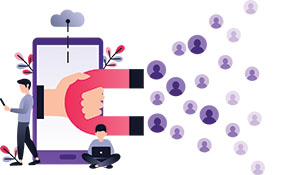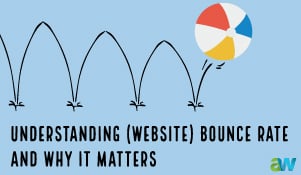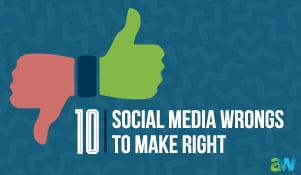I recently came across an article in a recent issue of Bloomberg Business that discussed a recent move by the NBA to embrace virtual reality (VR) and give viewers a VR streaming option for one game in each of the 25 weeks of the 2016-17 season (available at no additional cost to subscribers of the NBA’s League Pass). This makes the NBA the first sports league to commit to a VR schedule, and it blew my mind at the boldness of their action.
I’ll get to the “why” in a moment, but first, let’s look at some numbers on both the NBA and VR because it will help you to understand why this excites me the way that it does.
NBA Fans by the Numbers*:
- Youngest fans, overall, of all major league sports
- Higher African American audience (3 times greater than the NFL)
- 45% of regular NBA viewers/fans are less than 35 years old
- 70% are male
- 62% are aged 18-54
- Only sport where Caucasian fans are outnumbered
- 53% earn between $40,000 - $75,000
- At the $100,000+ salary range, only NASCAR is lower than the NBA for a total percentage of the viewership demographic
- One out of three NBA fans regularly tracks live scores
- More than 7% play fantasy sports (higher than the NFL)
- Average NBA fan is 16% more likely to be single
* Statistics from Brandon Gaille. Full article where these statistics came from can be found and read at his site. Click here.
VR is in such an infancy stage that there aren’t many statistics on it yet, but there are some worthy of noting.
Virtual Reality Statistics:
- VR users as of 2016: 43 million
- Number of predicted users by 2018: 171 million (from NiftyReads.com)
- Projected 2017 revenue from VR products: $4.6 Billion U.S. (from NiftyReads.com)
- 96% between 14 and 19 years old (GenZ) said they were interested in VR (from NiftyReads.com)
- Of that 96%, 26% said they had already tried VR headsets (from NiftyReads.com)
- Google’s Cardboard app has been downloaded 10 million times (Motley Fool)
- One million people have used Samsung’s Gear VR in the past month (Motley Fool)
Okay. Now that we have the numbers out of the way, let me start explaining why I think the NBA’s move is, as I told a friend of mine when I first read the article, an “interesting, strategic, and very bold” one.
- The NBA knows who their audience is and is giving them something they’re betting on that they’ll not only like but embrace. The numbers show us that the NBA has the youngest and the most single fans of any sports league. I’d bet my morning coffee that if I dug deeper, I’d find that this group ranks high in the statistics for gaming as well.
- Their fans make a decent income. Maybe not enough to buy season tickets, but I’m willing to bet my coffee again that the majority of them have the League Pass (in my opinion, adding the VR game is giving them a perk for the $200 annual subscription fee) and probably are willing to spend some of their disposable income on having the most up-to-date tech toys and gaming gear.
- VR is getting cheaper to own. Like any new technology, it’s always more expensive when it first comes out. Once the “hotness” starts catching on, new suppliers and developers start to surface, and the price starts coming down (think flat screen tvs, smartphones, etc.). You can get the Google Cardboard for $15 and Samsung Gear VR for $100—pocket change these days which is why the number of users is going to double in 2017 and triple in 2018.
- The number of users are going to triple by 2018. Just mentioned this above. TRIPLE. That’s huge and is largely based on the price coming down. There are, of course, the naysayers that are putting VR in the same category as 3D TV, but I don’t think that’s a good comparison. There are just too many opportunities to use it that 3D TV didn’t have.
- The NBA’s fans are tech savvy and into the game. They’re already following the game either online or by watching it from their homes. Probably more than one game like NFL fans on a Sunday. Statistically, many of them play the game—either pick-up games with friends in leagues, or considering the age group, in school or college. Imagine if they were able to be IN the game once a week simply by donning VR gear.
- On the flip side, it gives the NBA an opportunity to start reaching and getting more of those $100,000+ salaried fans. These are (largely) men who DO have a lot of disposable income, even more toys, and most likely, the ones who will have the season passes. Now, this move covers the other side of the marketing question: how do you get more money (and attention) out of those who aren’t as involved? This does it.
According to VR and augmented reality industry expert, Robert Scoble, it's not just the NBA that's stepping up their tech-savvy game - ALL the major sports leagues are making similar moves. "Professional sports teams are losing fans to their home simply because it's more comfortable." According to Scoble, Levi's Stadium (home of the San Francisco 49ers) is leading the NFL in state-of-the-art stadiums by installing 2,000 beacons that make the fan experience more comfortable - having a hot dog or beer delivered to you, help find the shortest bathroom line, and more. The technology goes beyond the creature comforts of the fan. NBA teams such as the Warriors and the Kings are experimenting with augmenting the experience for their fans during the games. Using augmented reality technology and pairing it with next gen/smartglasses, soon fans will be able to have an entirely different live game experience. And, of course, the NFL is right behind them and soon will begin placing sensors on players which will allow fans the ability to check players stats, speed, as well as help the teams evaluate and enhance athletic performance.
So all of this is a great step for the sports marketing world where their budgets are mind boggling, but what does this all mean to the average marketer? Honestly, not much unless you’re ready to embrace the VR world, and it fits your product and services. However, the lessons are still there: know your audience and what they like (and how they like to be marketed to). Be willing to take a chance on new technologies and ideas. Some will work. Some won’t.
If you are more committed to delivering a quality experience to the consumer, it will almost always work in your favor. Think of all the people who were early adopters of social media and how much further ahead they were when it finally became mainstream. No one knows what is going to be the next “big” thing which is why you, again, have to always be watching and ready to move when one makes sense to your business.









Leave a comment